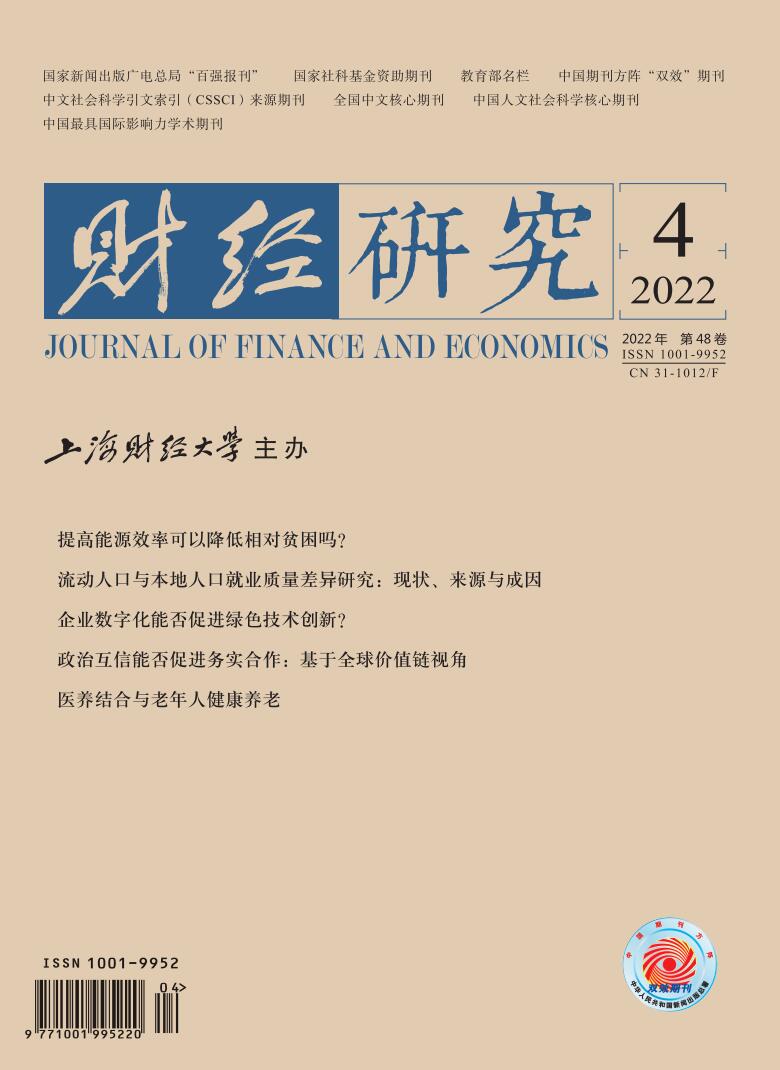以高水平对外开放开创合作共赢新局面是党的十九届五中全会的重要议题。文章以2008—2017年“一带一路”沿线国家为研究样本,考察不同国家与中国的友好城市交流程度如何影响该国在“一带一路”倡议提出后的国际竞争力发展,深入挖掘“一带一路”倡议推动沿线国家共建共赢的影响机制,并尝试对加速“十四五”时期对外开放政策的落地生根进行有益思考。研究发现,在倡议提出后,历史上与中国友好城市交流程度较高的沿线国家的国际竞争力明显提高,并且这一影响主要得益于这些国家在基础设施、行政机构、金融市场发展、劳动力市场效率以及商品市场效率等方面的全面提升。进一步的研究显示,对于“一带一路”沿线的内陆国、低收入国、外汇紧缺国以及高人口红利国来说,通过城市结谊有益于其更好地共享“一带一路”倡议的发展成果。文章不仅揭示了国际城市结谊在落实国家高水平对外开放顶层设计中的重要作用,而且也为推进“十四五”规划的落实提供了政策参考。
国际城市结谊与“一带一路”共建共赢——基于国际竞争力指数的经验证据
摘要
参考文献
9 李小林. 城市外交: 理论与实践[M]. 北京: 社会科学文献出版社, 2016.
27 Agénor P R. Health and infrastructure in a model of endogenous growth[J]. Journal of Macroeconomics,2008,30(4): 1407−1422. DOI:10.1016/j.jmacro.2008.04.003
28 Delios A, Henisz W J. Political hazards, experience, and sequential entry strategies: The international expansion of Japanese firms, 1980-1998[J]. Strategic Management Journal,2003,24(11): 1153−1164. DOI:10.1002/smj.355
29 Desai M A, Foley C F, Forbes K J. Financial constraints and growth: Multinational and local firm responses to currency depreciations[J]. The Review of Financial Studies,2008,21(6): 2857−2888. DOI:10.1093/rfs/hhm017
30 Du J L, Zhang Y F. Does One Belt One Road initiative promote Chinese overseas direct investment?[J]. China Economic Review,2018,47: 189−205. DOI:10.1016/j.chieco.2017.05.010
31 Duggal V G, Saltzman C, Klein L R. Infrastructure and productivity: A nonlinear approach[J]. Journal of Econometrics,1999,92(1): 47−74. DOI:10.1016/S0304-4076(98)00085-2
32 Egger P, Merlo V. The impact of bilateral investment treaties on FDI dynamics[J]. The World Economy,2007,30(10): 1536−1549. DOI:10.1111/j.1467-9701.2007.01063.x
33 Ginsburgh V, Melitz J, Toubal F. Foreign language learning and trade[J]. Review of International Economics,2017,25(2): 320−361. DOI:10.1111/roie.12268
34 Guiso L, Sapienza P, Zingales L. Cultural biases in economic exchange?[J]. The Quarterly Journal of Economic,2009,124(3): 1095−1131. DOI:10.1162/qjec.2009.124.3.1095
35 Head K, Ries J. Do trade missions increase trade?[J]. Canadian Journal of Economics,2010,43(3): 754−775. DOI:10.1111/j.1540-5982.2010.01593.x
36 Lee C W, Park S. Does religious similarity matter in international trade in services?[J]. The World Economy,2016,39(3): 409−425. DOI:10.1111/twec.12276
37 Pollins B M. Conflict, cooperation, and commerce: The effect of international political interactions on bilateral trade flows[J]. American Journal of Political Science,1989,33(3): 737−761. DOI:10.2307/2111070
38 Porter M E. The competitive advantage of nations[J]. Harvard Business Review,1990,68(2): 73−93.
39 Rauch J E. Networks versus markets in international trade[J]. Journal of International Economics,1999,48(1): 7−35. DOI:10.1016/S0022-1996(98)00009-9
40 Reinikka R, Svensson J. Coping with poor public capital[J]. Journal of Development Economics,2002,69(1): 51−69. DOI:10.1016/S0304-3878(02)00052-4
41 Spolaore E, Wacziarg R. The diffusion of development[J]. The Quarterly Journal of Economics,2009,124(2): 469−529. DOI:10.1162/qjec.2009.124.2.469
42 Tubadji A, Nijkamp P. Cultural impact on regional development: Application of a PLS-PM model to Greece[J]. The Annals of Regional Science,2015,54(3): 687−720. DOI:10.1007/s00168-015-0672-2
43 Wagner D, Head K, Ries J. Immigration and the trade of provinces[J]. Scottish Journal of Political Economy,2002,49(5): 507−525. DOI:10.1111/1467-9485.00245
44 Yakop M, van Bergeijk P A G. Economic diplomacy, trade and developing countries[J]. Cambridge Journal of Regions, Economy and Society,2011,4(2): 253−267. DOI:10.1093/cjres/rsr002
引用本文
翁若宇, 宁博, 陈秋平. 国际城市结谊与“一带一路”共建共赢——基于国际竞争力指数的经验证据[J]. 财经研究, 2022, 48(4): 94-108.
导出参考文献,格式为:





 3684
3684  3122
3122

